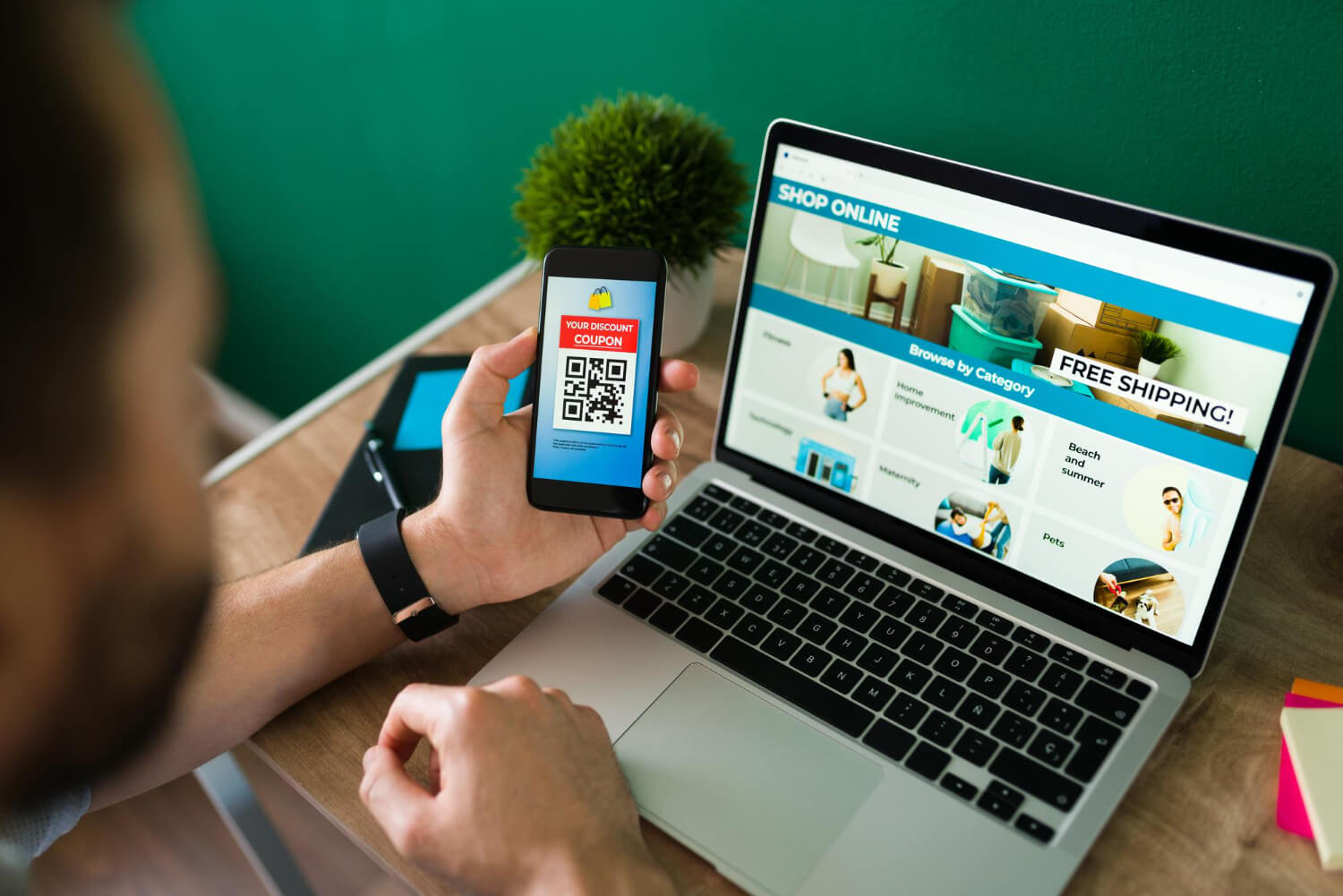The Four Building Blocks of Successful Mobile App Creation
In today’s hyperconnected world, the demand for robust and engaging mobile applications has reached an all-time high. Whether you’re a startup founder, a product manager, or an enterprise leader, understanding the four building blocks of successful mobile app creation is critical to launching an app that delights users and drives measurable business outcomes. As Depex Technologies has helped dozens of brands achieve mobile success, we know that app development isn’t just about coding. It’s about laying a solid foundation and following proven processes.
This comprehensive blog will walk you through the four building blocks of successful mobile app creation—from ideation and design, to development, testing, and deployment. You’ll discover expert strategies, actionable insights, and industry best practices to ensure your app stands out in a crowded marketplace. Let’s get started.
Why Understanding the Four Building Blocks of Mobile App Creation Is Essential
Mobile apps are everywhere—from on-demand food delivery to global banking and entertainment streaming. However, not every app achieves success. Statistics show that most apps fail within their first year, often due to poor planning, lack of market research, inadequate technology choices, or subpar user experience. The secret? Mastering the four building blocks of successful mobile app creation ensures your project is set up for success from day one.
At Depex Technologies, we believe these four pillars—Strategy, User Experience Design, Development, and Quality Assurance & Deployment—are the backbone of every high-performing mobile app. Let’s break down each stage and explore what it takes to excel.
Building Block 1: Strategic Planning & Ideation
The Foundation of Every Great Mobile App
Every successful mobile app starts with a powerful idea, but ideation alone isn’t enough. Strategic planning turns raw concepts into a roadmap for success. This phase shapes the entire lifecycle of your app and prevents costly missteps later.
1. Market Research and Problem Identification
The first step is market research—analyzing user pain points, market gaps, and competitor offerings. Use surveys, social listening, and data analytics to understand what your target audience really wants. Define the problem your app will solve, and ensure it aligns with actual user needs.
2. Defining Your Unique Value Proposition
Every app needs a compelling value proposition. What makes your app different or better? Whether it’s a new feature, a seamless workflow, or superior speed, clarify how your app stands out. This becomes the core of your marketing and messaging later.
3. Setting Clear Goals and KPIs
Establish measurable goals from the start. Do you want to reach 100,000 downloads in the first six months? Or achieve a 4.5-star rating on app stores? KPIs like active users, retention rates, and conversion metrics guide every decision and ensure your team stays focused.
4. Choosing the Right Monetization Model
Should your app be free, freemium, subscription-based, or ad-supported? Your revenue model impacts user experience and future growth. Evaluate what works best for your industry and audience.
5. Product Roadmapping
Once you have your goals and value proposition, develop a product roadmap. Identify core features for the MVP (Minimum Viable Product), future enhancements, timelines, and resource requirements.
Depex Technologies Pro Tip:
Investing time in strategic planning saves you from expensive pivots later. Our expert product strategists guide clients through every step, ensuring your app idea is both viable and scalable.
Building Block 2: User Experience (UX) and User Interface (UI) Design
Transforming Ideas into Intuitive, Beautiful Experiences
The second building block is design—the bridge between strategy and technology. With millions of apps competing for attention, design can make or break your project. Modern users expect seamless, visually appealing interfaces that are simple, intuitive, and engaging.
1. Creating User Personas and User Journeys
Great design starts with empathy. Develop detailed user personas to understand your audience’s needs, behaviors, and preferences. Map out the user journey—from first app launch to completing core actions—to identify friction points and optimize the flow.
2. Wireframing and Prototyping
Before any code is written, create wireframes and interactive prototypes. These blueprints visualize app structure, layout, and navigation. Prototypes allow for early user feedback and iteration, saving time and resources during development.
3. UI Design: Consistency and Visual Identity
Your app’s look and feel should reflect your brand identity and appeal to your target audience. Use a consistent color palette, typography, iconography, and micro-interactions. Well-crafted UI builds trust and makes your app memorable.
4. Accessibility and Inclusivity
Design isn’t just about aesthetics; it’s about accessibility. Ensure your app is usable for all, including users with disabilities. Implement color contrast, readable fonts, and assistive technologies like voice commands.
5. UX Writing and Microcopy
Clear, concise text guides users through your app. Invest in high-quality UX writing—from button labels to onboarding instructions—so every word helps users achieve their goals effortlessly.
Depex Technologies Pro Tip:
We believe in a design-first approach. Our experienced UX/UI designers use the latest tools and frameworks to create experiences that users love—and keep coming back to.
Building Block 3: Robust Mobile App Development
Turning Blueprints into Reliable, Scalable Software
Once you have a validated design, it’s time to build. Mobile app development is where your vision becomes reality. This stage involves selecting the right technologies, building core functionality, integrating APIs, and ensuring security and scalability.
1. Choosing the Right Tech Stack
Should you build native apps (using Swift for iOS, Kotlin for Android), or opt for cross-platform frameworks like React Native or Flutter? The choice depends on your budget, timeline, performance needs, and future scalability.
- Native Apps: Best for high performance, deep device integration, and platform-specific features.
- Cross-Platform Apps: Cost-effective for reaching multiple platforms with a single codebase.
2. Backend and API Integration
Mobile apps often need a powerful backend for authentication, data storage, real-time updates, and third-party integrations. Choose scalable backend solutions—like Node.js, Firebase, or AWS Amplify—and secure, well-documented APIs.
3. Agile Development Methodology
Use Agile methodologies to break the project into manageable sprints. Agile encourages regular testing, rapid iteration, and transparency between teams. This approach keeps projects on track and ensures quick adaptation to feedback.
4. Security and Compliance
With cyber threats on the rise, security is non-negotiable. Implement data encryption, secure authentication, and comply with regulations (such as GDPR, HIPAA, or PCI-DSS, if relevant). Secure code practices and regular security audits are critical.
5. Performance Optimization
Fast, responsive apps drive higher engagement. Optimize code, minimize resource usage, and test on multiple devices to ensure smooth performance—even under heavy loads.
Depex Technologies Pro Tip:
Our developers are experts in both native and cross-platform frameworks. We build for scalability, performance, and security—delivering robust apps that are future-proof.
Building Block 4: Quality Assurance, Testing & Deployment
Delivering a Flawless User Experience, Every Time
No matter how innovative your app idea or how beautiful your design, bugs and performance issues can destroy your reputation. The fourth building block—Quality Assurance (QA), Testing, and Deployment—ensures your app works perfectly in the real world.
1. Manual and Automated Testing
Combine manual testing with automated test scripts to cover every scenario. Test for functionality, usability, performance, and security. Automated tests speed up release cycles and reduce human error.
2. Device and Platform Compatibility
With hundreds of devices and OS versions, thorough compatibility testing is a must. Simulate real-world usage on popular smartphones, tablets, and wearables. Check for issues across both Android and iOS ecosystems.
3. Beta Testing and User Feedback
Launch beta versions to select users for early feedback. Monitor crash reports, app analytics, and user behavior. Real user input highlights areas for improvement you might have missed.
4. Continuous Integration and Deployment (CI/CD)
Implement CI/CD pipelines to automate builds, testing, and deployment. This modern approach enables faster updates, rollback capabilities, and quick bug fixes—keeping your app competitive.
5. Launch and Post-Launch Support
A successful launch is just the beginning. Monitor your app for performance, user feedback, and crash analytics. Provide regular updates, feature enhancements, and technical support to maintain user engagement and trust.
Depex Technologies Pro Tip:
We use industry-leading QA tools and CI/CD pipelines for every project, ensuring your app is bug-free, high-performing, and ready to scale from day one.
Why Each Building Block Matters: The Secret to Mobile App Success
The four building blocks of successful mobile app creation aren’t just theoretical—they are proven, actionable steps followed by the world’s top app brands. When you skip a step or cut corners, your app risks falling short in usability, security, or performance. A well-executed app:
- Attracts and retains loyal users
- Generates higher revenue and positive reviews
- Reduces time-to-market and development costs
- Builds a future-proof foundation for scaling
At Depex Technologies, we approach every mobile app project with this proven methodology, combining creativity, technical expertise, and business insight to maximize your return on investment.
Frequently Asked Questions (FAQ)
1. What are the most important factors in mobile app success?
Success depends on solving real user problems, excellent UX/UI design, robust development, and thorough testing. Following the four building blocks of successful mobile app creation ensures your app meets market expectations.
2. How long does mobile app development take?
Timelines vary depending on complexity. Simple apps may take 2-3 months, while feature-rich or enterprise-level apps can take 6 months or more. Early planning and agile methodologies help accelerate delivery.
3. Should I build native or cross-platform apps?
Native apps offer the best performance and access to device features. Cross-platform apps save time and cost for targeting both iOS and Android with a single codebase. Depex Technologies can advise the right approach for your business goals.
4. What is the cost of building a mobile app?
Costs depend on app complexity, features, technology stack, and post-launch support. Get a free consultation from Depex Technologies to estimate your project.
5. How do I maintain and update my app after launch?
Ongoing updates are essential to fix bugs, add features, and stay ahead of competitors. Partnering with a reliable technology provider like Depex Technologies ensures your app remains optimized and secure.
Case Studies: Real Results from Depex Technologies
Case Study 1: FinTech Mobile App
A leading FinTech startup partnered with Depex Technologies to create a secure, user-friendly banking app. By following all four building blocks, the app achieved over 200,000 downloads in its first year, with a 4.7-star rating and high user retention.
Case Study 2: Healthcare Appointment Platform
A healthcare provider needed a HIPAA-compliant appointment scheduling app. Our strategic planning and rigorous QA process resulted in a 40% decrease in no-shows and 30% increase in repeat appointments, improving both patient satisfaction and provider efficiency.
Case Study 3: E-Commerce Marketplace App
A retail startup wanted to disrupt the e-commerce space. Our UX-first design and scalable development led to 100,000+ active users within six months, seamless integrations, and glowing customer reviews.
Emerging Trends in Mobile App Development
1. Artificial Intelligence & Machine Learning
Integrate smart features like chatbots, recommendation engines, and voice assistants to create personalized experiences and automate tasks.
2. Internet of Things (IoT)
Connect your mobile app to smart devices, wearables, and sensors for real-time data exchange and control.
3. Progressive Web Apps (PWAs)
PWAs combine the best of web and mobile apps, providing offline access, push notifications, and fast loading times without the need for app store downloads.
4. Augmented Reality (AR) and Virtual Reality (VR)
Deliver immersive experiences in gaming, education, retail, and more by leveraging AR/VR technology.
Depex Technologies is always ahead of the curve, adopting the latest trends to future-proof your mobile app investment.
How to Get Started: Partner with Depex Technologies
Ready to bring your mobile app idea to life?
Depex Technologies has the expertise, creativity, and technical mastery to transform your vision into a market-leading app. Here’s why clients choose us:
- Experienced, multidisciplinary teams
- Proven track record across industries
- Transparent processes, from strategy to launch
- Full-cycle development: planning, design, coding, QA, deployment, and support
- Flexible engagement models to fit any budget
Schedule a free consultation today and take the first step toward building a successful, future-ready mobile app.
Final Conclusion: Build Your Success Story with Depex Technologies
The four building blocks of successful mobile app creation—Strategic Planning, UX/UI Design, Robust Development, and Quality Assurance & Deployment—are essential to every winning app. Cutting corners or skipping steps leads to poor reviews, security risks, and missed opportunities.
Don’t leave your mobile app’s success to chance.
Partner with Depex Technologies and harness our experience, creativity, and commitment to excellence. Let’s create an app that not only meets your business goals but exceeds user expectations.
Contact Depex Technologies today for a free consultation—and start your journey toward mobile app success.






